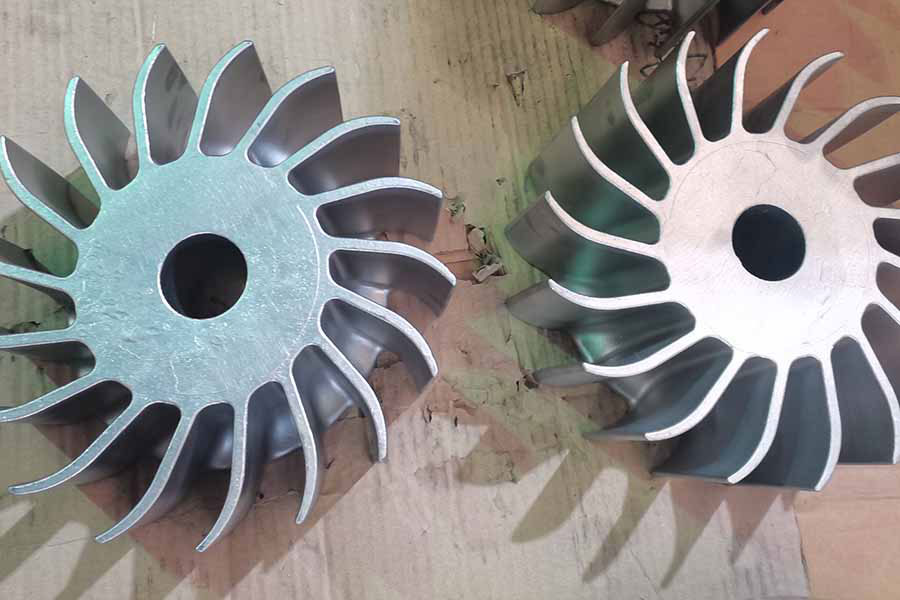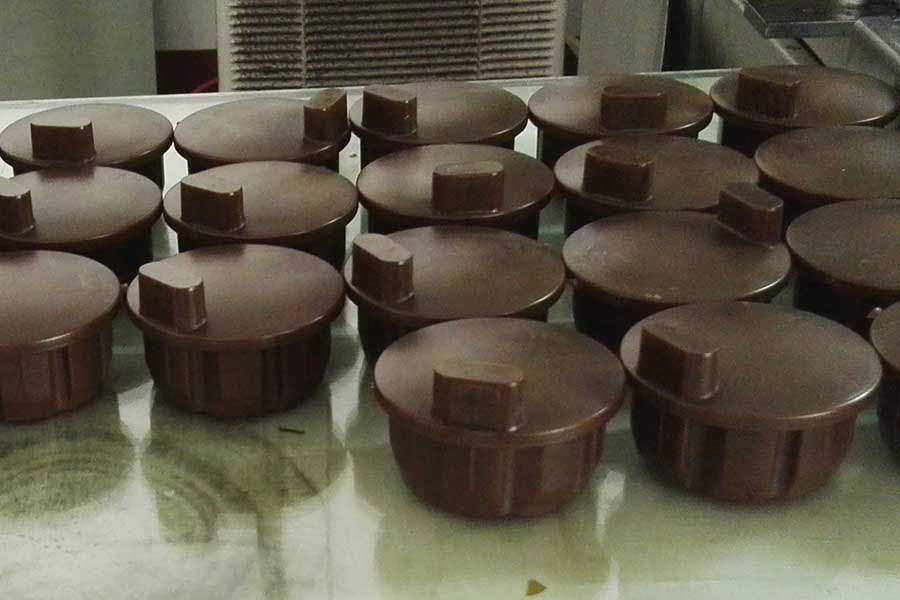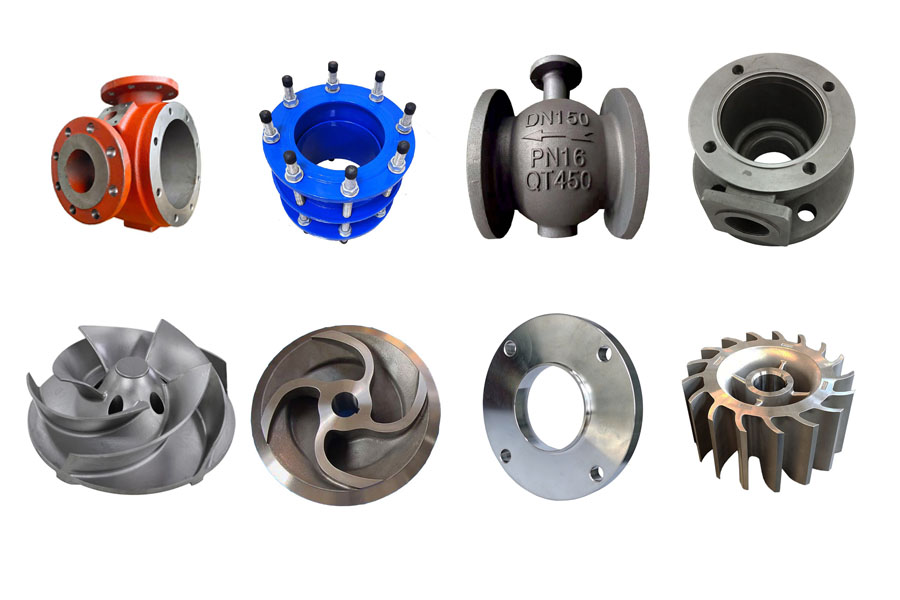Normalizing, also known as normalization, is to heat the workpiece to Ac3 (Ac refers to the final temperature at which all free ferrite is transformed into austenite during heating, generally from 727°C to 912°C) or Acm (Acm is In actual heating, the critical temperature line for complete austenitization of hypereutectoid steel is 30~50℃ above 30~50℃. After holding for a period of time, the metal heat treatment process is taken out of the furnace and cooled by water spraying, spraying or air blowing. Its purpose is to make the grain refinement and carbide distribution uniform. The difference between normalizing and annealing is that the normalizing cooling rate is slightly faster than the annealing cooling rate, so the normalizing structure is finer than the annealing structure, and its mechanical properties are also improved. In addition, the external cooling of the normalizing furnace does not take up equipment, and the productivity is high. Therefore, normalizing is used as much as possible to replace annealing in the production. For important forgings with complex shapes, high temperature tempering (550-650°C) is required after normalizing. The purpose of high temperature tempering is to eliminate the stress generated during normalizing cooling and improve toughness and plasticity. After normalizing treatment of some low-alloy hot-rolled steel plates, low-alloy steel forgings and castings, the comprehensive mechanical properties of the materials can be greatly improved, and the cutting performance is also improved.
① Normalization used for low carbon steel, the hardness after normalizing is slightly higher than that of annealing, and the toughness is also good. It can be used as a pretreatment for cutting.
② Normalization used for medium carbon steel, it can replace the quenching and tempering treatment (quenching + high temperature tempering) as the final heat treatment, or as a preliminary treatment before surface quenching by induction heating.
③ Normalization used in tool steel, bearing steel, carburized steel, etc., can reduce or inhibit the formation of network carbides, so as to obtain a good structure required for spheroidizing annealing.
④ Normalization used for steel castings, it can refine the as-cast structure and improve the cutting performance.
⑤ Normalization used for large forgings, can be used as the final heat treatment, so as to avoid larger cracking tendency during quenching.
⑥ Normalization used for ductile iron to improve hardness, strength, and wear resistance, such as the manufacture of important parts such as crankshafts and connecting rods of automobiles, tractors, and diesel engines.
⑦ The normalizing process is carried out before the spheroidizing annealing of the hypereutectoid steel, which can eliminate the network secondary cementite to ensure that the cementite is all spheroidized during the spheroidizing annealing.
Structure after normalizing: Hypoeutectoid steel is ferrite + pearlite, eutectoid steel is pearlite, hypereutectoid steel is pearlite + secondary cementite, and it is discontinuous.
Normalizing is mainly used for steel workpieces. Normalizing steel is similar to annealing, but the cooling rate is higher and the structure is finer. Some steels with a very low critical cooling rate can transform austenite into martensite when cooled in air. This treatment is not normalizing, but is called air quenching. In contrast, some large-section workpieces made of steel with a large critical cooling rate cannot obtain martensite even if quenched in water, and the quenching effect is close to normalizing. The hardness of steel after normalizing is higher than that of annealing. When normalizing, it is not necessary to cool the workpiece with the furnace like annealing. The furnace takes up a short time and the production efficiency is high. Therefore, normalizing is generally used as much as possible to replace annealing in the production. For low-carbon steel with a carbon content of less than 0.25%, the hardness achieved after normalizing is moderate, which is more convenient for cutting than annealing, and normalizing is generally used to prepare for cutting and work. For medium carbon steel with a carbon content of 0.25 to 0.5%, it can also meet the requirements of cutting after normalizing. For light-loaded parts made of this type of steel, normalizing can also be used as the final heat treatment. Normalizing of high-carbon tool steel and bearing steel is to eliminate network carbides in the organization and prepare the organization for spheroidizing annealing.
For the final heat treatment of ordinary structural parts, since the normalized workpiece has better comprehensive mechanical properties than the annealed state, normalizing can be used as the final heat treatment for some ordinary structural parts that are not stressed and have low performance requirements to reduce the number of processes, Save energy and improve production efficiency. In addition, for some large or complex parts, when quenching is in danger of cracking, normalizing can often replace quenching and tempering as the final heat treatment.
To control the steel castings with a good mechanical property, there're several announcements on normalizing heat treatment.
1. Make the Proper Positions of the Steel Castings in the Furnaces
During normalizing treatment, the steel castings should be fixed in certain position. They can't be located randomly. A good position during normalizing can make areas of steel investment castings heat treated homogeneously.
2. Think About the Different Sizes and Wall Thickness before Heating
For steel castings with long shape or thin diameter, it's much better to place them well to avoid distortion defects. If steel castings with small section surface and big section surface are heating in the same furnace, the castings with small section should be placed at front of the oven. For complex steel castings, especially for those with hollow shapes, it's much better to preheat the castings firstly and then increase the temeperature slowly. This will help to avoid stress defects left in steel castings caused by quick heating process.
3. The Cooling After Normalization
After normalizing, the steel castings should be placed separately on dry ground. Heated castings can't be overlaped, or placed in moist ground. These will affect the cooling on different sections of the castings. The cooling rates on different sections will affect the hardness at those areas.
Generally, temperature of water can't higher than 40℃. Temperature of oil is less than 80℃.
4. Normalizing for Castings of Different Steel Grades
If the required temperatures for steel castings with different materials are same, they can be heat treated in one oven. Or, they should be heated according to the required temperatures of different grades.
Post time: Jun-27-2021




